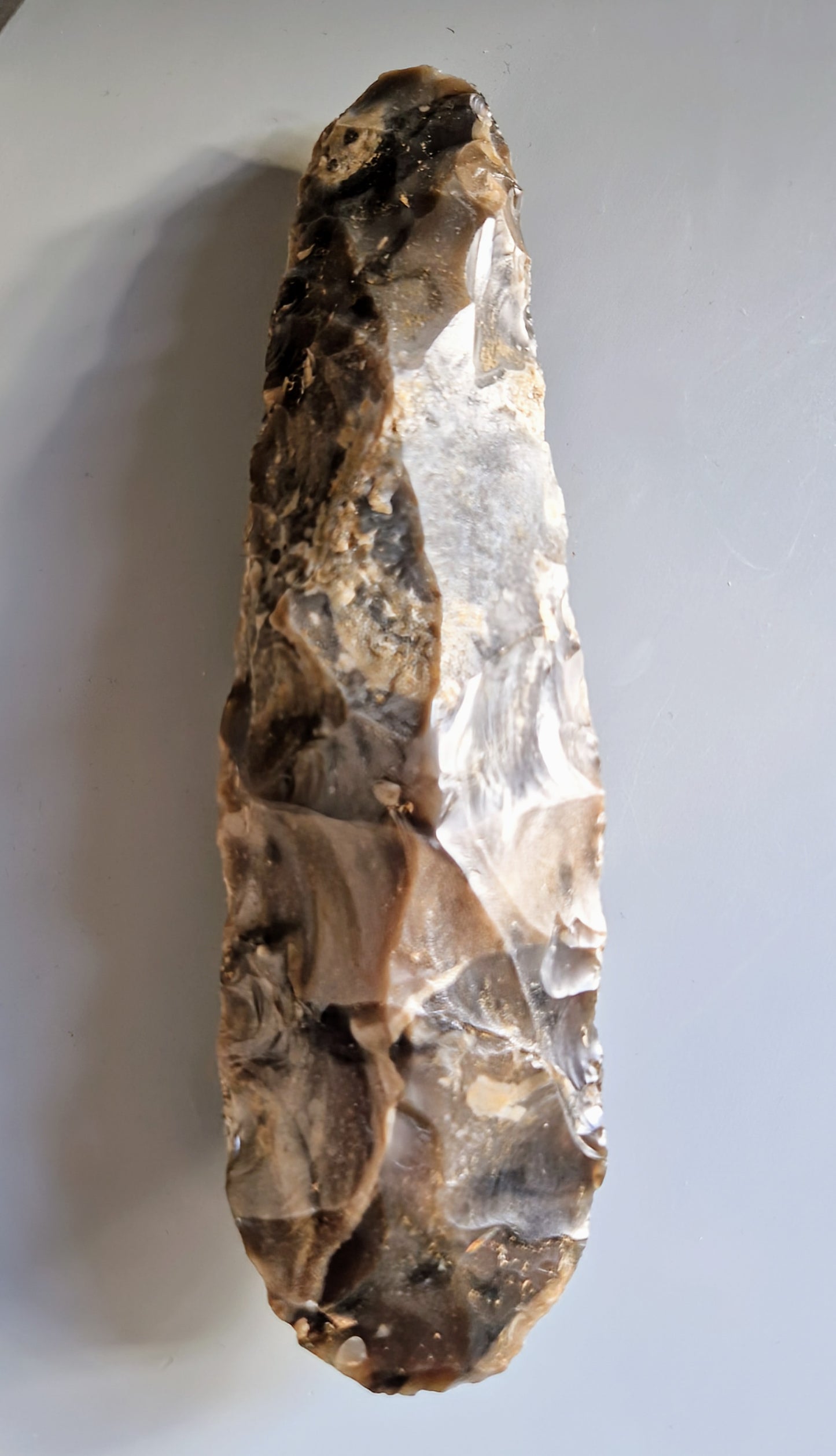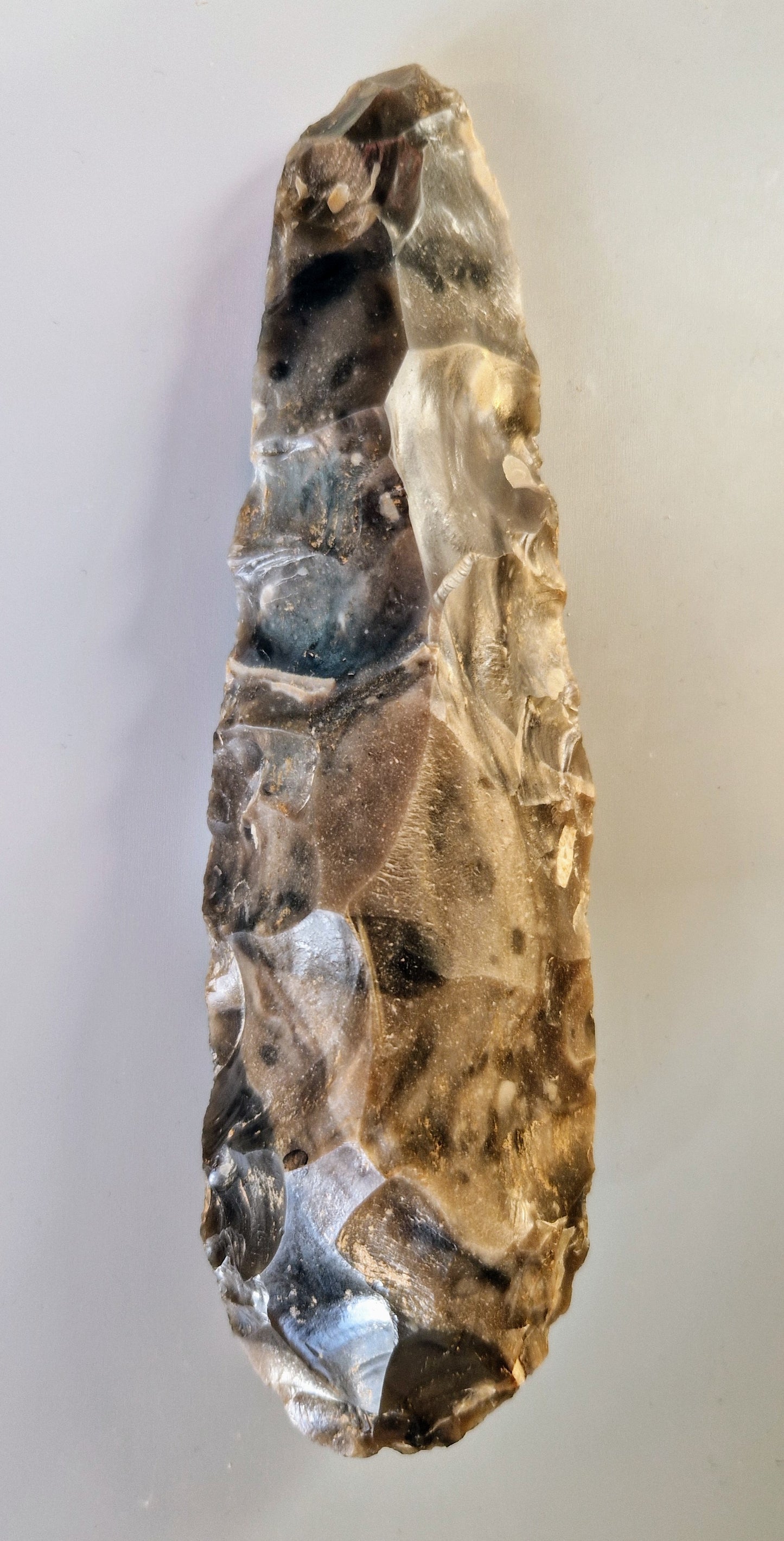Stone Age Artifacts
Neolithic Axe Head from Suffolk - England. Recorded With The British Museum
Neolithic Axe Head from Suffolk - England. Recorded With The British Museum
Couldn't load pickup availability
British Museum Record Number CORN-DA306D
Recorded via the Portable Finds Database. https://finds.org.uk/database/artefacts/record/id/898568
Orders outside of the UK are possible, this will take an extra 4 to 6 weeks on average an export license will be needed. - Sent via Royal Mail Special Delivery in the UK.
This rare and fine example is simply stunning, you will struggle to find a better recorded example.
Lakenheath where this axe was found is an area in Suffolk, very close to the famous flint mines of Grimes Graves.
The beautiful Artifact will fit perfectly displayed as the centre piece of your collection.
Below is the main piece of the write up for the British Museum.
Found whilst field walking in Lakenheath, Suffolk, England
Dimensions and weight
Length: 193 mm
Width: 51 mm
Thickness: 36 mm
Weight: 365 g
A flint axe dating from the Neolithic period, an elongated oval in plan, and lozenge-shaped in profile and section. Made on a flint nodule which has been flaked on both sides to produce the shape of the axe: a series of regular, large flake scars is visible along both margins and on both faces. The resulting tool is thin at the edges, with a thick ridge along the medial line on both faces and two narrow, curved ends. All of the cortex has been removed by this process. The principal cutting end, or blade, is wider than the butt which is also thin enough to have also been used for cutting. The edges on both faces of the axe have been retouched by the removal of many smaller, shallow flakes to produce a straight, sharp edge. The flint is dark grey-brown in colour, with a large irregular-shaped inclusion of light grey-brown slightly coarser flint and several small inclusions of quartz-like crystals; the surface is covered with a thin, transparent, shiny patina. The resulting axe appears to be the preform for a Neolithic polished axe (Butler, 2005, pp.139-142). A preform would also have been perfectly serviceable as an axe and slight wear near the cutting edge and along both side edges suggest that this might have been the case. Equally, it may have been destined for polishing but discarded, perhaps because of the impurities in the flint.
Butler (2005) illustrates a narrow flaked axe in colour plate 20, and an axe preform, but not as narrow, from Long Down flint mine, Sussex on page 140, fig.57, no.2, which are both dated from the Neolithic period, c.4000-2300 BC.
Bond (2004) illustrates a smaller flaked axe but with a similar shape in plan and section on page 64, fig.5.48, no.L133, which was excavated at Spong Hill, Norfolk, but was unstratified.
Share




